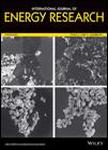版权所有:内蒙古大学图书馆 技术提供:维普资讯• 智图
内蒙古自治区呼和浩特市赛罕区大学西街235号 邮编: 010021

作者机构:Islamic Azad Univ Fac Nat Resources & Environm Sci & Res Branch Dept Energy Engn Tehran Iran Univ Missouri Dept Mech & Aerosp Engn Columbia MO 65211 USA Islamic Azad Univ Pardis Branch Dept Mech Engn Pardis Iran
出 版 物:《INTERNATIONAL JOURNAL OF ENERGY RESEARCH》 (国际能源研究杂志)
年 卷 期:2020年第44卷第11期
页 面:9001-9020页
核心收录:
学科分类:0820[工学-石油与天然气工程] 08[工学] 0807[工学-动力工程及工程热物理] 0827[工学-核科学与技术]
主 题:gas turbine heat recovery steam generation modeling multi-objective optimization solid oxide fuel cell
摘 要:Many studies have attempted to optimize integrated Solid Oxide Fuel Cell-Gas Turbine (SOFC-GT), although different and somehow conflicting results are reported employing various algorithms. In this study, Multi-Objective Optimization (MOO) is employed to approach the optimal design of SOFC-GT considering all prevailing factors. The emphasis is placed on the evaluation of the Particle Swarm Optimization (PSO) and Genetic Algorithm (GA) performance as two effective approaches for solving the multi-objective and non-linear optimization problems. Multi- objective optimization is carried out on two vital objectives;the electrical efficiency and the overall output power of the system. The considerable achievements are the set of optimal points that aim to identify the system optimal performance which provides a practical basis for the decision-makers to choose the appropriate target functions. For the studied conditions, the two algorithms nearly exhibit similar performance, while the PSO is faster and more efficient in terms of computational effort. The PSO appears to achieve its ultimate parameter values in fewer generations compared to the GA algorithm under the examined circumstances. It is found that the maximum power of 410 kW is accomplished employing the GA optimization method with an efficiency of 64%, while PSO method yields the maximum power of 419.19 kW at the efficiency of 58.9%. The results stress that PSO offers more satisfactory convergence and fidelity of the solution for the SOFC-GT MOO problems.